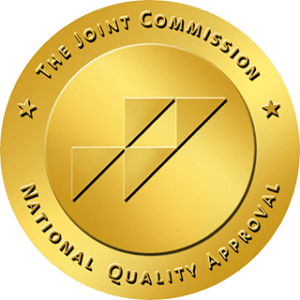For the first time since 2018, the U.S. has seen a decrease in drug overdose deaths and poisonings, with the CDC noting a 14.5% reduction in deaths between June 2023 and June 2024. More than 107,000 people lost their lives to a drug overdose in 2023, and opioids like fentanyl were responsible for 70% of them.
To learn that these numbers are trending downward is a huge relief, though it does little for the families that have already been impacted by this terrible epidemic. So why are fentanyl numbers decreasing? While it’s difficult to project what will happen in the future, we can be hopeful that certain steps are working. Let’s explore what they are.
Naloxone (Narcan) Is Saving Lives
Naloxone is a medication that can rapidly reverse an opioid overdose. It works by binding to the same receptors in the brain that opioids attach to, effectively displacing the opioid molecules and blocking their effects. This allows the medication to quickly restore breathing in a person who is experiencing an overdose. Naloxone is easy to use and typically available as a nasal spray, though it’s also available in an injectable form. It’s distributed for free in high-risk areas, and people who use opioids—or know someone who does—often carry it.
Improved Treatment Resources
The U.S. has also made improvements in the treatments and resources available for people with opioid use disorder. Medications that reduce opioid cravings, including methadone and buprenorphine, are widely available and covered by Medicaid. Most insurance plans also cover some level of evidence-based treatment. This allows individuals to safely detox from opioids and build a healthy foundation that supports long-term recovery.
Fentanyl Is Not As Strong
Another possible reason why there are fewer overdose deaths is because the fentanyl supply to the U.S. is drying up. For the first time, fentanyl is becoming more expensive and harder to find. It appears that there has been a major disruption in the supply chain, with gangs trafficking less fentanyl as well as weakening or adultering their supply. Even lab tests confirm that fentanyl is being cut or watered down aggressively, often with a chemical agent known as BTMPS. While toxic to human health, it does not cause overdose or immediate death.
Other Synthetic Substances Are Emerging
Throughout the U.S., gangs are selling “cocktails” of street drugs. While the amount of fentanyl seems to be decreasing, other substances are increasing, such as animal tranquilizers like xylazine and medetomidine and mood enhancers and supplements like tianeptine. These chemicals are highly toxic and can cause severe withdrawal symptoms, skin wounds, and other health problems.

Effective Treatment Options for Opioid Use Disorder
The numbers don’t lie—while fentanyl still remains a major concern in the U.S., the number of people dying from the substance is decreasing. This good news shows that we are moving in the right direction. However, we must also be vigilant about other substances that could be rising and causing problems of their own, such as animal tranquilizers. If you or a loved one is ready to seek help for an opioid use disorder, know that there are many treatment options available to support you.
Medication-Assisted Treatment
Medication-assisted treatment (MAT) involves the use of FDA-approved medications to reduce withdrawal symptoms, cravings, and the risk of relapse. Common medications include methadone, buprenorphine, and naltrexone.
Methadone is a long-acting opioid that blocks the euphoric effects of other opioids and prevents withdrawal. It’s typically administered in specialized clinics. Buprenorphine is a partial opioid agonist that reduces cravings and withdrawal symptoms and is administered in office settings. Naltrexone is an opioid antagonist that blocks opioid receptors. The only caveat is that you must be completely withdrawn from opioids before starting the medication.
Behavioral Therapies and Counseling
While medications can stabilize brain chemistry, you still need therapy and counseling to address the social, behavioral, and psychological aspects of your opioid use. Some of the best approaches for treating opioid use disorders are cognitive behavioral therapy (CBT), motivational interviewing, contingency management, and family therapy.
Support Services and Recovery Programs
Comprehensive support also involves additional recovery services such as 12-step programs and peer support groups and case management and social services. These services can help you get back on your feet, such as by helping with housing, employment, or legal issues. They can also help you build a support network that motivates you to stay sober.
Treatment for Co-Occurring Conditions
People who misuse substances often struggle with mental health problems. Integrated treatment addresses both substance use and mental health simultaneously to lead to better outcomes. If you know that you are dealing with an underlying mental health disorder like anxiety or depression, look for recovery programs that offer dual diagnosis care and/or medication management.
Relapse Prevention
Opioid use disorder is a chronic condition that requires long-term treatment. Fortunately, by maintaining a healthy lifestyle, taking your medications, and attending all of your appointments, you can protect yourself from relapse. Be prepared to create a relapse prevention plan that outlines your triggers and strategies for managing them, schedule regular follow-ups with your healthcare providers, and continue attending meetings and ongoing counseling.
Seek Treatment for Opioid Use Disorder in Easton, PA
While it's reassuring to see that fentanyl overdose deaths are decreasing, this doesn’t mean you should lower your guard. It’s important to be aware of the dangers of opioids and other street drugs that enter the market and how they can affect you and the ones you love. Most importantly, know that help is available and you don’t have to lose your life over fentanyl or any other drug. To start your journey to health and healing, contact Recovery Cove at 484-549-COVE.




